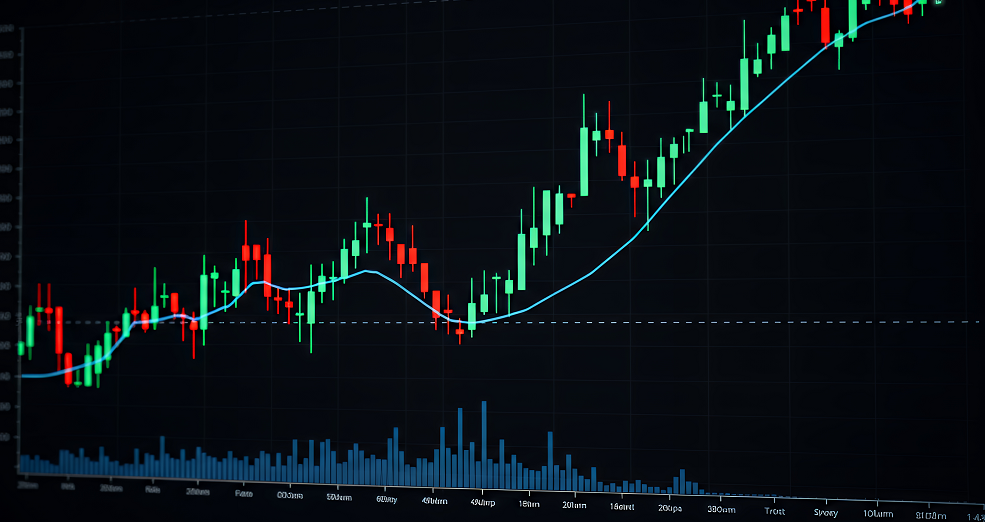IC Markets – Europe Fundamental Forecast | 31 October 2025
What happened in the Asia session?
The Asia session on October 31, 2025, featured cautious market reactions as investors digested China’s mixed PMI data and steadied Tokyo CPI results, while global sentiment remained tentatively positive following the U.S.-China trade truce. Chinese equities and CNY were the most affected by the data, while Japanese and Australian assets enjoyed mild risk-on interest without major volatility.
What does it mean for the Europe & US sessions?
China’s weak PMI readings signal ongoing economic challenges in the world’s second-largest economy, while the surprise U.S.-China trade breakthrough has injected optimism into risk assets. Central banks have adopted divergent paths—the Fed signals caution on further cuts, the ECB maintains its extended pause, and the BoJ remains dovish despite inflation concerns. Exceptional earnings from tech giants Amazon and Apple have bolstered confidence in the U.S. corporate sector and consumer resilience.
The Dollar Index (DXY)
Key news events today
No major news event
What can we expect from DXY today?
The Dollar is under pressure due to a prolonged U.S. government shutdown, anticipated Federal Reserve rate cuts, and the delayed release of major U.S. economic data. However, some safe-haven flows and Fed commentary have led to temporary spurts of USD strength against select currencies, such as the Peso and ZAR, while the market waits for key inflation and employment figures.
Central Bank Notes:
- The Federal Open Market Committee (FOMC) voted, by majority, to lower the federal funds rate target range by 25 basis points to 3.75%–4.00% at its October 28–29, 2025, meeting, marking the second consecutive cut following the 25 basis points reduction in September.
- The Committee maintained its long-term objectives of maximum employment and 2% inflation, noting that the labor market continues to soften, with modest job creation and an unemployment rate edging higher. In comparison, inflation remains above target at around 3.0%.
- Policymakers highlighted ongoing downside risks to economic growth, tempered by signs of resilient economic activity. September’s consumer price index (CPI) came in slightly lower than expected at 3.0% year-over-year, easing inflation pressure but still warranting vigilance given tariff-driven price effects.
- Economic activity expanded modestly in the third quarter, with GDP growth estimates around 1.0% annualized; however, uncertainty remains elevated amid persistent global trade tensions and the U.S. government shutdown, which is impacting data availability.
- The updated Summary of Economic Projections reflects an anticipated unemployment rate averaging approximately 4.5% for 2025, with headline and core personal consumption expenditures (PCE) inflation projections holding near 3.0%, indicating a slow easing path ahead.
- The Committee emphasized its flexible, data-dependent approach and underscored that future policy adjustments will be guided by incoming labor market and inflation data. As in prior meetings, there was dissent, including one member advocating a more aggressive 50-basis-point cut.
- The FOMC announced the planned conclusion of its balance sheet reduction (quantitative tightening) program, intending to cease runoff in the near term to maintain market stability, with Treasury redemption caps held steady at $5 billion per month and agency mortgage-backed securities caps at $35 billion.
- The next meeting is scheduled for 9 to 10 December 2025.
Next 24 Hours Bias
Weak Bearish
Gold (XAU)
Key news events today
No major news event
What can we expect from Gold today?
Gold prices remain volatile today, Friday, with the market showing heightened sensitivity to central bank actions, macroeconomic signals, and ongoing geopolitical uncertainties. Prices continue to hover around the $4,000 level, reflecting a combination of recent bullish rallies fueled by Federal Reserve rate cuts, but technical signals warn of corrective downward pressure as investors react to mixed data and shifting sentiment.
Next 24 Hours Bias
Medium Bullish
The Euro (EUR)
Key news events today
Core CPI flash estimate y/y (10:00 am GMTT)
CPI flash estimate y/y (10:00 am GMT)
What can we expect from EUR today?
Eurozone inflation is stabilizing near ECB targets, allowing the central bank to hold rates steady.The market is digesting modest economic growth and new policy signals, with volatility persisting in major euro currency pairs.Major policy discussions include advancing plans for the digital euro and maintaining fiscal and structural reforms to reinforce competitiveness amid a slow global recovery.
Central Bank Notes:
- The Governing Council of the ECB kept the three key interest rates unchanged at its meeting on 30 October 2025. The main refinancing rate remains at 2.15%, the marginal lending facility at 2.40%, and the deposit facility at 2.00%. This decision reflects policymakers’ assessment that the current monetary stance remains consistent with medium-term price stability, while incoming data confirm a gradual return of inflation towards the target.
- Recent indicators point to stable price dynamics. Headline inflation remains near the 2% mark, with energy prices contained and food inflation easing slightly after earlier supply bottlenecks. Wage growth continues to moderate, contributing to the slowdown in domestic cost pressures. The ECB reiterated its commitment to a data-driven, meeting-by-meeting approach and emphasized flexibility in the face of uncertain global financial conditions.
- Eurosystem staff projections have not been materially altered since September. Headline inflation averages remain at 2.0% for 2025, 1.8% for 2026, and 2.0% for 2027. Recent softening in producer prices and subdued pipeline pressures suggest limited upside risks to inflation, though geopolitical tensions and potential commodity shocks continue to pose uncertainties to the outlook.
- Euro area GDP growth remains on track with earlier forecasts, projected at 1.1% for 2025, 1.1% for 2026, and 1.4% for 2027. Forward-looking indicators, including PMIs and industrial sentiment surveys, signal some stabilization in activity following weakness in the third quarter. Public investment and recovering export activity are expected to offset softer private sector demand in the near term.
- The labor market remains resilient, with unemployment rates at multi-decade lows and participation rates strong. Real income growth continues to support household spending, even as consumption growth normalizes from earlier highs. Financing conditions remain favorable, aided by stable banking sector liquidity and improved credit demand among small and medium-sized firms.
- Business sentiment remains mixed, reflecting lingering uncertainty over global trade policy and the path of US tariffs. However, easing supply chain costs and improved export competitiveness due to softer exchange rates are providing some relief to manufacturing and external-oriented sectors.
- The Governing Council reaffirmed that future decisions will depend on an integrated assessment of incoming data—covering inflation trends, financial conditions, and the state of policy transmission. The Council emphasized that no pre-set path for rates exists; keeping all options open should the economic outlook shift markedly.
- Balance sheet reduction continues smoothly, with holdings under the APP and PEPP declining as reinvestments have ceased. The ECB confirmed that the pace of portfolio runoff remains in line with its previously communicated normalization plan, supporting a gradual withdrawal of monetary accommodation in a predictable manner.
- The next meeting is on 17 to 18 December 2025
Next 24 Hours Bias
Weak Bearish
The Swiss Franc (CHF)
Key news events today
No major news event
What can we expect from CHF today?
The Swiss Franc (CHF) is seeing modest downward movement as of Friday, following recent strength throughout October. The most current data shows the CHF trading at 1.077 per euro as of October 30, which represents a very minor decrease of 0.03% from the previous day, but a 1.21% appreciation compared to one year ago. Against the US dollar, the USD/CHF pair has seen some volatility, trading at about 0.8022 with technical forecasts suggesting short-term bearish momentum but hints at a possible bullish correction before likely continuation of the downtrend.
Central Bank Notes:
- The SNB maintained its key policy rate at 0% during its meeting on 25 September 2025, pausing a sequence of six consecutive rate cuts as inflation stabilized and the Swiss franc remained firm.
- Recent data showed a modest rebound in inflation, with Swiss consumer prices rising 0.2% year-on-year in August after staying above zero for three consecutive months; this helped alleviate fears of deflation that were mounting earlier in the year.
- The conditional inflation forecast remains broadly unchanged from June: headline inflation is expected to average 0.2% in 2025, 0.5% in 2026, and 0.7% in 2027. The risk of a negative rate move has diminished for now, but the SNB retains flexibility should inflationary pressures weaken again.
- The global economic outlook has deteriorated further, weighed down by heightened trade tensions—especially with the U.S.—and ongoing uncertainty in key Swiss export markets.
- Swiss GDP growth moderated in Q2 after a strong Q1 boosted by front-loaded U.S. exports. The SNB expects growth to slow and remain subdued, with forecasted GDP expansion between 1% and 1.5% in both 2025 and 2026.
- Labor market sentiment in the Swiss industrial sector has softened on concerns over export competitiveness and potential adjustments to production, but the overall growth outlook stays broadly unchanged
- The SNB reiterated its readiness to respond as needed if deflation risks re-emerge, emphasizing its commitment to medium-term price stability and a robust, transparent communication policy, with the introduction of more detailed monetary policy minutes beginning in October.
- The next meeting is on 11 December 2025.
Next 24 Hours Bias
Weak Bullish
The Pound (GBP)
Key news events today
No major event
What can we expect from GBP today?
The British Pound remains under pressure as UK fiscal and monetary policy uncertainty, combined with a strong US Dollar, drives short-term downward momentum. While some technical forecasts suggest the possibility of a rebound if support levels hold, the overall environment currently favors further GBP/USD weakness. The GBP/USD currency pair is currently in a strong downtrend and trading within a descending channel, with immediate support identified near 1.3100 and resistance around 1.3245.
Central Bank Notes:
- The Bank of England’s Monetary Policy Committee (MPC) voted on 18 September 2025 by a majority (expected split likely 7–2 or 6–3) to hold the Bank Rate steady at 4.00%, following the rate cut in August. Most members cited persistent inflation and mixed indicators on growth and employment, while a minority favored further easing due to the cooling labor market and subdued GDP growth.
- The Committee decided to decrease the pace of quantitative tightening, planning to reduce the stock of UK government bond purchases by £67.5 billion over the next 12 months, instead of the prior £100 billion pace, with the gilt balance now standing at nearly £558 billion. This reflects increased volatility in bond markets and a shift to a more gradual approach.
- Headline inflation rose unexpectedly to 3.8% in July and is projected at 4% for September, above the Bank’s 2% target. Price pressures are driven by regulated energy costs and ongoing food price increases. While previous disinflation has been substantial, core inflation remains elevated and sticky.
- The MPC expects headline inflation to remain above target through Q4, with a resumption of the downward trend projected for early 2026 as energy and regulated price pressures abate. The Committee remains watchful for signs of persistent inflation despite previous policy tightening.
- UK GDP growth is stagnant, with business and consumer activity subdued. Recent labor market data show rising unemployment rates (now at 4.7%) and stabilizing wage growth (holding near 5%), indicating slack but continued wage price pressure. The Committee remains cautious amid lackluster demand and soft survey sentiment.
- Pay growth and employment indicators have moderated further, alongside confirmation from business surveys that pay settlements are slowing. The Committee expects wage growth to decelerate significantly through Q4 and the rest of 2025.
- Global uncertainty persists due to volatile energy prices, supply chain disruptions linked to Middle East conflicts, and renewed trade tensions. The MPC remains vigilant in tracking transmission of external cost/wage shocks to UK inflation.
- Risks to inflation are considered two-sided. While subdued domestic growth and softening labor activity suggest scope for easing, persistent inflation requires caution. The MPC anticipates a slow, gradual reduction path in rates, continuing its data-dependent approach with careful adjustment as warranted by economic developments.
- The Committee’s bias remains toward maintaining a restrictive monetary policy stance until firmer evidence emerges that inflation will return sustainably to the 2% target. All future decisions will remain highly data dependent, with a strong emphasis on evolving demand, inflation expectations, costs, and labor market conditions.
- The next meeting is on 6 November 2025.
Next 24 Hours Bias
Medium Bearish
The Canadian Dollar (CAD)
Key news events today
GDP m/m (12:30 pm GMT)
What can we expect from CAD today?
The Canadian Dollar remains weak as October ends, pressured by stalled GDP growth, risk-averse global sentiment, and lackluster domestic data. The focus today is on Canada’s monthly GDP report, expected at 12:30 pm GMT, which could further influence CAD direction. The USD/CAD pair climbed to 1.3988, with the US Dollar gaining 0.32% against the CAD yesterday, snapping a three-session losing streak. The CAD continues to trade near its 12-week low, and the greenback remains up 3% from its June lows.
Central Bank Notes:
- The Council noted that U.S. tariff tensions have eased slightly following early progress in bilateral discussions, though the external trade environment remains fragile. Businesses continue to hold back on long-term investment, with the Bank highlighting that sustained clarity on U.S. trade policy is needed to restore confidence.
- The Bank acknowledged that uncertainty persists despite the softer U.S. tone, as incoming data show limited improvement in export orders. The manufacturing sector has stabilized but remains below pre-2024 output levels, reflecting weak global demand and cautious corporate spending.
- Canada’s economy showed tentative signs of recovery in early Q4, with GDP estimated to expand by 0.3% in October after two quarters of contraction. Mining and energy activity strengthened modestly, aided by steady crude demand, while goods exports posted a fractional gain.
- Service sector growth remained uneven, supported mainly by tourism-related and technology services. However, retail spending and household consumption were subdued, constrained by slower job creation and lingering consumer caution. The Bank judged overall momentum as fragile but improving marginally.
- Housing activity showed modest reacceleration in major urban markets as mortgage rates stabilized near record lows. Nonetheless, affordability pressures and stricter lending standards continue to cap overall resale volumes, leading to only a gradual recovery in the housing sector.
- Headline CPI inflation rose to 2.1% in October, reaching the Bank’s target for the first time in six months. The increase was driven by higher energy prices and a modest uptick in food and shelter costs. Core inflation measures remained stable, suggesting underlying price pressures are contained.
- The Governing Council reiterated its data-dependent stance, indicating that the current policy rate remains appropriate amid tentative growth and balanced inflation risks. Officials noted that while additional stimulus is not ruled out, the emphasis has shifted toward monitoring the sustainability of the recovery rather than immediate rate adjustments.
- The next meeting is on 17 to 18 December 2025.
Next 24 Hours Bias
Weak Bearish
Oil
Key news events today
No major new event
What can we expect from Oil today?
The oil market today is pausing its decline amid tight inventories and headline-driven rebounds, but it remains fundamentally weighed down by oversupply and macroeconomic caution. Analysts expect continued volatility, with oversupply predicted to persist into late 2025 and 2026. While sanctions and unexpected drawdowns support prices temporarily, structural headwinds such as weak demand growth and surplus production, especially from OPEC+ and the U.S., are likely to keep oil prices under downward pressure in the coming months.
Next 24 Hours Bias
Medium Bearish




